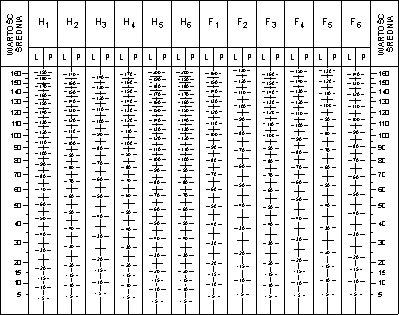The Ryodoraku methodThe Ryodoraku method is known for 50 years; it was developed in Japan by prof. Yoshio Nakatani. In Poland it is in use since 1983. Its pioneers were physicians from the Acupunctural Treatment Consulting Unit (presently Z. Garnuszewski Centre of Acupuncture). RYODORAKU means line of high electrical conductivity . This is what the method creator called the lines he has discovered, which actually overlap with the meridians of classical acupuncture. Since 1950 in Osaka, Japan prof. Y. Nakatani has been leading research that aimed at finding the relationship between the functional state of inner organs and electric resistance measured at points appropriate for meridians. During the measurement of the electric conductivity (equal to reciprocal of electric resistance) of patients suffering from kidney inflammations, points of increased conductivity (when compared to their surrounding) were found. These points were named Reactive Electro - Permeable Points, or REPP. Research conducted on a large number of patients and healthy people has shown that REPPs can be found in 9 out of 10 people with kidney ailments but are never found in healthy people. It has turned out that REPPs lie on one line, which overlaps with the kidney meridian points. Nakatani named it the Kidney Ryodoraku.Further research has shown existence of another REPP line, which overlaps with the classical lung meridian and accompanies lung ailments. It was also found that the Ryodoraku line corresponding to the large intestine sometimes appears in patients with lung illnesses, which supports the theory that a front-back, or yin-yang relationship between meridians exists. As a result, 12 pairs of Ryodoraku lines (which accurately, but not perfectly, overlap with classical acupuncture meridians) were found. Also, couple hundred REPPs were described. The measurement of electric conductivity in all REPPs is impossible and it cannot be applied in practice. Therefore, Nakatani aimed at making use of measurements made at specific REPPs in objectivisation of deviations found on each of the Ryodoraku lines. He assumed that pathological Ryodoraku would show either significantly incerased or decreased electric conductivity compared to that of a physiological Ryodoraku. To confirm this, average values of electric conductivity at all REPPs along a specific meridian should be found. Further research has refuted the need for making measurements at all REPPs. It is enough to make them only at Representative Measuring Points, or RMPs. These points share a following feature: their average electric conductivity is equal to average conductivities of REPPs along the whole meridian. The Ryodoraku diagnosis process begins with the measurement of electric conductivities at 24 RMPs. Then, the results are placed on a special form - Ryodoraku analysis card. 
Deviations from the average (the so-called physiological tunnel) of the Ryodoraku lines can be easily read from the analysis table. The basis for making a diagnosis are following information:
Making a general diagnosis on the basis of the table alone is only the beginning. Then, a detailed diagnosis should be made on the basis of Ryodoraku symptom table. After the diagnosing, a stimulation may be performed; we distinguish between two treatment methods:
Each of the therapies may be performed in two ways - either through a stuck acupunctural needle (by touching it with the active electrode) or directly (by touching the skin with the active electrode). General Ryodoraku therapy is applied in cases of chronical diseases, when it is necessary to activate the whole organism. After performing Ryodoraku measurements and filling the Ryodoraku table with the results, channels with energetic excess and deficiency are specified. At first, two Ryodoraku that are most deviant from the physiological tunnel should be chosen and the stimulation should be performed on these; later the number of stimulated points can be increased, up to all which are outside the physiological tunnel. It should be noticed, however, that with the progress of the therapy, the number of deviant Ryodoraku decreases! REPP local therapy brings rapid help in cases of acute illnesses; it can be also treated as one of the stages of local treatment. The therapy consists of two stages:
The principle of this therapy is that REPPs which show increased electric conductivity are connected with the patient's ailment. The description above is only an outline of the method. Appropriate literature should be consulted for detailed information, e.g. 'The Ryodoraku method' study supplied with the KOLMIO RYODORAKU device.
| |||||||||